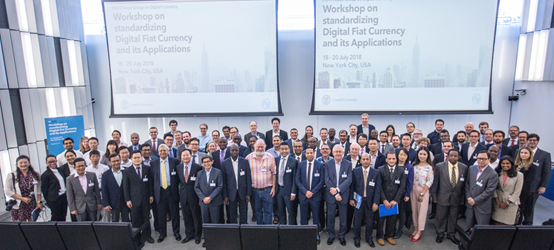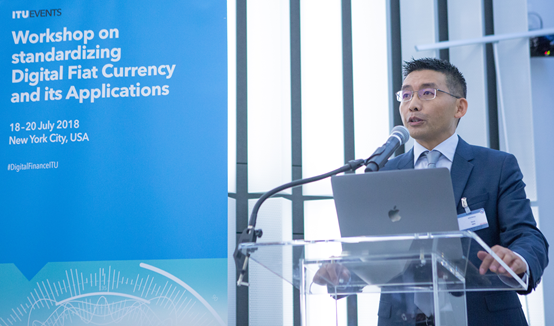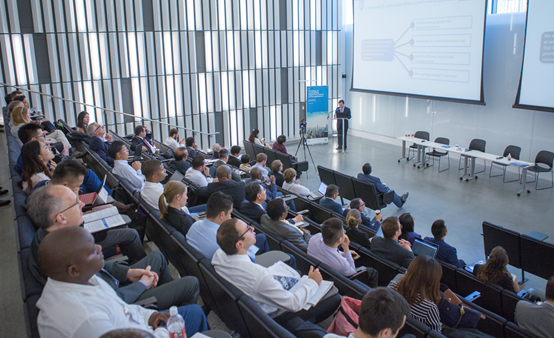With the banning of Initial Coin Offering (ICO) in many countries, crashing of crypto currency price, multiple hacking incidents that resulted in hundreds of millions of dollar losses for the investor, central banks around the world are working hard to provide Central Bank Digital Currency (CBDC) or Digital Fiat Currency, to provide a legal version of the country’s sovereign digital currency for their digital economy. In July 18-20 the second ITU Workshop on Standardizing Digital Fiat Currency and Applications was successfully held at the Cornel University Bloomberg Tech Campus, jointly hosted by Cornell University, Digital Fiat Currency Institute of San Francisco, and the International Communication Union, a United Nation’s agency for creating global telecommunication and information technology standards.

Central Banks from China, Brazil, Egypt, Sweden, Norway, and Philippines shared the research and pilot program of their DFC project. Gabriela Guibourg from Swedish Central Bank described the eKrona projcct, a Digital Fiat Currency project that has attracted 33 Fintech companies around the world to participate through opening bidding process. A decision on which solutions may be selected will be made towards the end of 2018. In the case of Philippine, the ePiso project was commercialized by Rizal Commercial and Banking Corp (RCBC), using DFC technology provided by eCurrency, a Silicon Valley based technology company. Margarita Lopez, First Senior Vice President of RCBC presented a convincing case on how DFC technology can be used to enhance security and provide efficient and interoperable settlement solution among many micro-loan as well as a vast array of vendor network. The ePiso project was supported by the Philippine Central Bank under its regulatory sandbox framework and has been online for a few months now. Both Brazil Central Bank and Egypt Central Bank described their case study on DFC with detailed plan, and it is expected pilots will be started soon in both countries.
After the DFC uses cases were presented, legal and economics experts from Bank of International Settlement, IMF, Gates Foundation, Federal Reserve of New York, US Department of Treasury, professors from Stanford, Berkeley, and Cornell held round table discussions with live debate and discussions of these Central Bank projects and technologies. This is the highest level gathering of global experts on Digital Fiat Currency and the only such types of conference with Central Bank from major countries around the world describing their ongoing projects. It will have a huge impact on how Central Banks with combat the confusion and instability that are brought about by the craze about Crypto Currency and ICO. It is clear that the critical mass of Central Banks who wants to deploy Digital Fiat Currency solution has been reached, and we expect tipping point to be reached in one or two years with a large Central Bank deploying Digital Fiat Currency across the whole country in a major effort.
Dr. David Wen, the Chairman of the ITU Focus Group on Digital Fiat Currency welcomed the participants with an update of what the Focus Group has achieved since their first conference held in Beijing, hosted by PBOC, Chinese Academy of Social Science and Chinese Ministry of Information and Communication. Under his leadership with only eight months after the kick-off of the focus group, more than twenty Central Banks around the world has joined the Focus Group, with seven of them presenting their use cases at the New York meeting, creating the world most comprehensive platform and highest level of gathering of global experts working on Central Bank Digital Currency.

During the three day conference, Dr Yao Qian’s talk on PBOC’s architecture of Digital Fiat Currency received great praise from all the participants. PBOC has been leading the world in the research and design of a Digital Fiat Currency solution since 2014, and the world is looking at PBOC for leadership in how to deploy a Central Bank Digital Currency solution. Dr Yao shared with the audiences detailed function, architecture design of PBOC’s two layer model, and Dr Yao Qian is also chairing the Reference Architecture working group where he is helping to bring consensus and standard features of DFC architecture that will be eventually standardized by the work of the ITU Focus Group on Digital Fiat Currency.

Hon Sarah Raskin, ex board member of Federal Reserve Board of Directors, and current Deputy Secretary of the US Treasury, gave a keynote speech on how the US is looking at the proliferation of crypto currency and ICO from the historic perspective. She said the lack of liquidity and the small number of key players behind the hundreds of crypto currencies will allow bad actors to manipulate the price of these crypto currencies, and resulting in losses for unsuspecting investors. She believes that a Central Bank Digital Currency will eventually bring stability, trust and efficiency to the innovation and confusion brought about the digital currency revolution.
When David Chaum, the father of DigiCash, Joey Mandoza who created the first mobile wallet in the Philippines, and Prof Udungu, the ex-governor of Bank of Kenya who made nPesa the most successful mobile payment system in the world got together to share their experience of pioneering break through technology for the past 25 years, the audience got advices on how to successfully promote, deploy and manage a digital revolution. It will help the Central Bank around the world to successfully deploy future Digital Fiat Currency projects.
The conference also brought many industrial experts from financial institutions, banks and mobile payment companies, to share the most advanced development in Digital Fiat Currency technology and best practices, and to discuss how the provide technology that would allow the central banks to regulate their services provided using Digital Fiat Currency. Security experts from Global Platform, International Standard Organization, as well as security professional debated about the security merits and risks brought about by the new Digital Fiat Currency solution.
The Digital Fiat Currency Institute who sponsored the ITU Focus Group activity is also planning to bring the Digital Fiat Currency laboratory, under the intellectual and operational guideline of ITU, to African regions as well as China. Follow us on ITU website on new development of Digital Fiat Currency practice and deployment.
